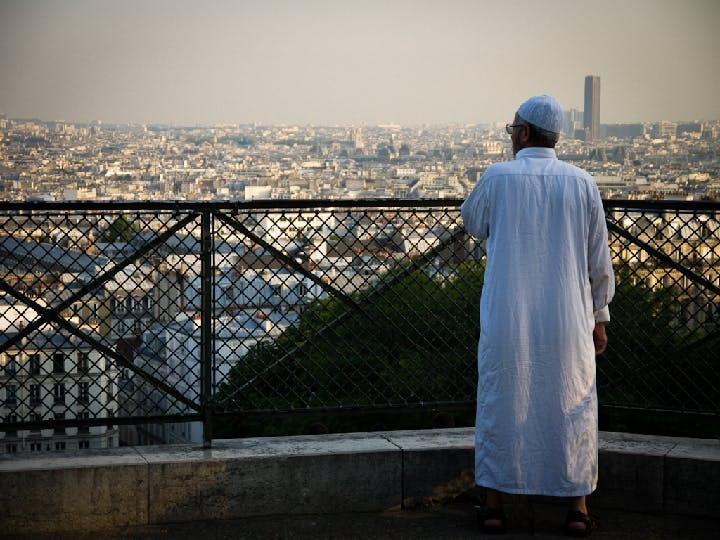Liberty, Equality, Fraternity? Native French citizens and their immigrant neighbors
– Maya Wesby
In Paris, the residents of suburban public housing are alienated from other French residents, for reasons both socioeconomic and cultural. Can the gap be bridged between native French citizens and their Muslim immigrant neighbors?
France is no stranger to periods of violence and riots across its capital city, Paris, and its suburbs. These instances, the most recent of which was the January 2015 Charlie Hebdo shootings, tend to have one common factor: they result from the segregation between low-income suburban residents and the rest of French society.
The city’s layout plays a crucial role in the economic imbalance of the French population. Paris has twenty arrondissements, or neighborhoods, that are ringed by upper- and middle-class residents to the west, while low-income residents, including many immigrants, reside mostly northeast of the city. It is a structure that physically alienates low-income residents, most of whom live in housing projects that, according to NPR’s Sylvia Poggioli, were hurriedly and poorly built in the postwar era to house the growing working class. The now dreary, rectangular buildings were originally intended to be leisurely spaces that encouraged open social interaction and offered easy commutes to and from nearby factories.
The buildings’ first residents were a mix of working-class French and working-class immigrants. Jobs were plentiful, education was free, and there was hope for the economic advancement of the next generation. But a government-sponsored home-buying program allowed many native French citizens to move elsewhere, while their immigrant neighbors could not afford to make such changes. And the factories have since shut down, leaving the first generation of French-born children of immigrants robbed of the opportunities — jobs, education, and respectable living conditions — that were presented to their native French counterparts.
A lack of opportunity in the early 1980s gave rise to delinquency among the youth of the area, triggering a strong police presence, which only heightened the level of suspicion between immigrants and native French. “The violence is an expression of anger but also a cry for help,” Harlem Désir, one of the handful of those interviewed by the New York Times in 2005 after another riot, says. “The state must be there to guarantee that people will be protected from discrimination, treated correctly by the police, [and] helped to get out of the projects.”
After a period of riots in 1983, then-President François Mitterrand ordered a renovation of low-income areas: repainting walls, fixing elevators, and establishing programs for the area’s youth. Despite this progressivism, these programs were quickly demolished when Jacques Chirac became president and his interior minister, future president Nicolas Sarkozy, increased police presence and aggressive force in the housing projects.
In the years since, demonstrations and violence have resulted from a combination of increasing police confrontations, a rise of unemployment, and deplorable economic conditions following the 2008 recession, a period from which the housing projects have yet to recover.
Since neither educational nor occupational opportunities exist, some residents turn to drugs and crime to release frustrations. Others turn to religion — an act that is reassuring to traditional, older Muslim generations yet worrisome to French officials. As France has the highest Muslim population in Europe, there is a fear that deprivation, inequality, and radical fundamentalist ideologies could curdle into acts of terrorism.
It is not just the sentiment of fear that influences the hostility against the immigrant population, but France’s legal implementation of secularism does, too. Muslim immigrants have moved into an environment where it is often illegal to display one’s faith — a cloaking that goes against Islamic customs. France’s separation of church and state, made legal in 1905, has become the basis for a multitude of rulings, including a 2004 ban on religious symbols in schools, the 2010 ban on publicly wearing face-coverings (which effectively included the Muslim niqab), and establishment of a 2013 program that required a 15-point guideline in classrooms to enforce the prohibiting of religion in school. These acts, intended to unite the French population by its commonalities instead of dividing it along religious fault lines, has only further isolated and stigmatized French Muslims.
How can the divide be bridged? It would be helpful for both sides to start a conversation and rid any perceived stereotypes, but more effective, perhaps, would be a scaling down of police aggression and an effort to equip more young people with the skills needed for careers. France has already made strides against its segregation and discrimination problem in response to the Charlie Hebdo shootings, and city planners intend to expand Paris to include a portion of its suburbs — which will expand access to jobs and city-centered resources for isolated and low-income immigrant areas.
But France must continue to make progressive and inclusive strides before an outburst of violence, a result of alienation and stigmatization, happens again.
* * *
The Sources: Sylvia Poggioli, “Public Housing’s Role in France's Tensions,” NPR’s Morning Edition, November 30, 2005.
Craig S. Smith, “Inside French Housing Project, Feelings of Being the Outsiders,” the New York Times, November 9, 2005.
Carla Power, “Why There’s Tension Between France and Its Muslim Population,” TIME magazine, January 8, 2015.
Photo courtesy of Francisco Osorio
